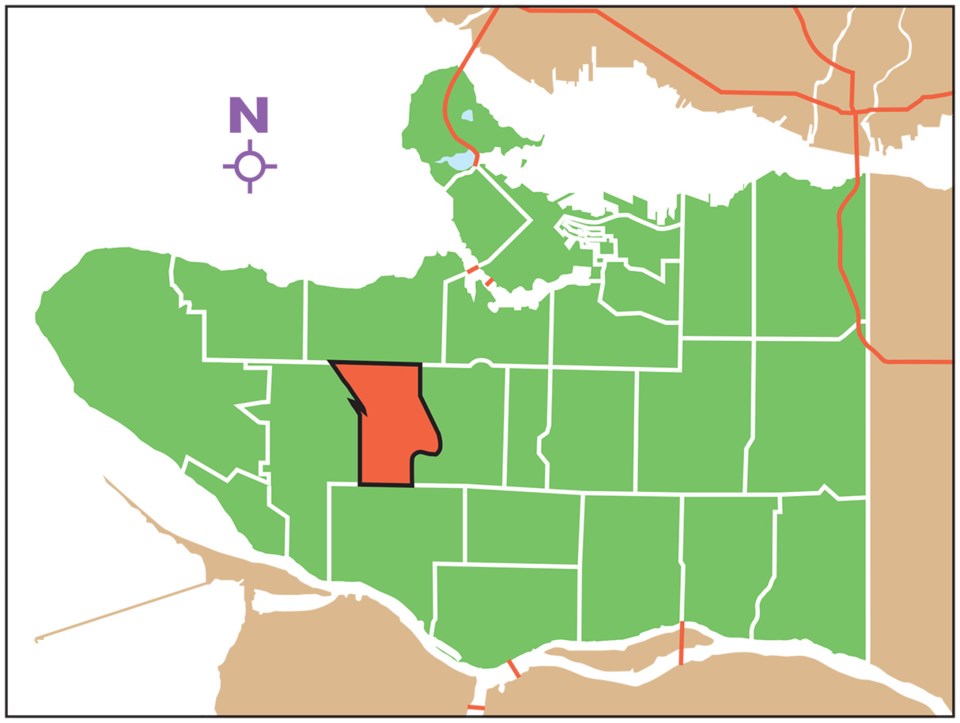The neighbourhood of Arbutus Ridge is interesting in that it encompasses several enclaves, including Mackenzie Heights, and reaches blocks into territory typically considered Kerrisdale.
The boundaries include West 16th to the north, West 41st Avenue to the south, Mackenzie Street to the west, and Arbutus Street and Maple Crescent to the east. The population is about 16,000, with the majority living in single-family homes on tree-lined streets.
It’s ironic this now largely affluent neighbourhood was once dubbed “Asthma Flats,” because in the late 1800s and early 1900s it was nothing more than a swamp that could only be traversed by a plank walkway.
Like many neighbourhoods of Vancouver, it was the Canadian Pacific Railway that brought about development to Arbutus Ridge. In 1888, the province turned over more than 2,100 hectares of land to the CPR, including the area now known as Arbutus Ridge, which became a municipality of the city in 1929.
The now defunct Arbutus line is still visible throughout much of the neighbourhood.
According to the most recent statistics available from the city, in 2006 almost 36 per cent of Arbutus Ridge residents were between the ages of 40 to 64, followed by the second highest demographic, aged 19 and under, at 23 per cent. English was still the predominant language in 2006 at 45.9, down from 57 per cent in 1996.
Meanwhile the number of Chinese-speaking residents rose from 29 to 34 per cent between that same time. Single family homes dominated the landscape at 6,100, and the median household income was almost $55,000, but that number is likely considerably higher today.
Starting in 1912, Mackenzie Heights, located in the upper southwest corner of Arbutus Ridge, was the first area of the community to be developed for residential settlement.
It wasn’t until the 1940s and 1950s that sand was hauled in from False Creek to fill in the Asthmas Flats so development of the low lands could begin.
The area was once home to dozens of houses designed by architect G.L.Thornton Sharp in the English arts and crafts style and even today, several can still be spotted along West 37th Avenue.


